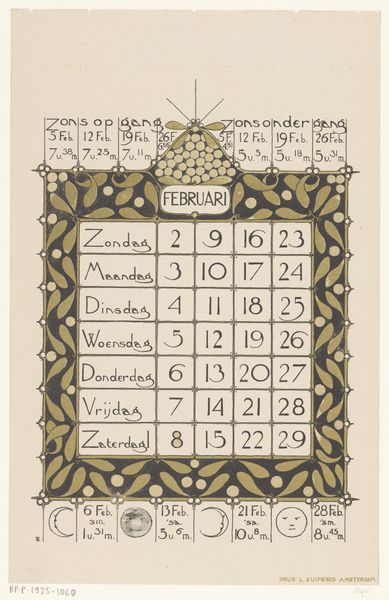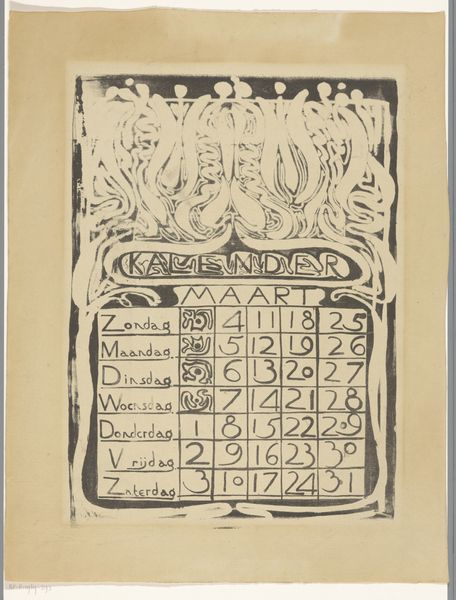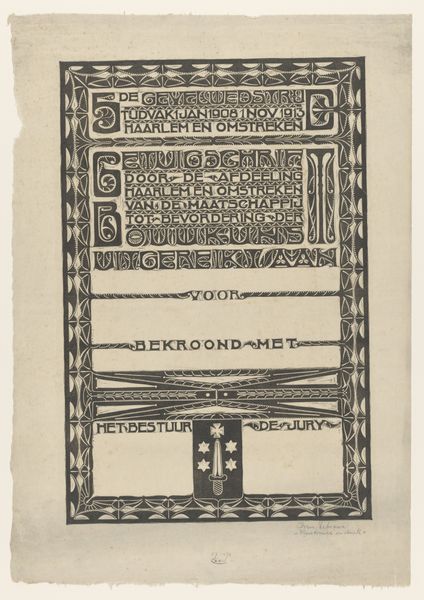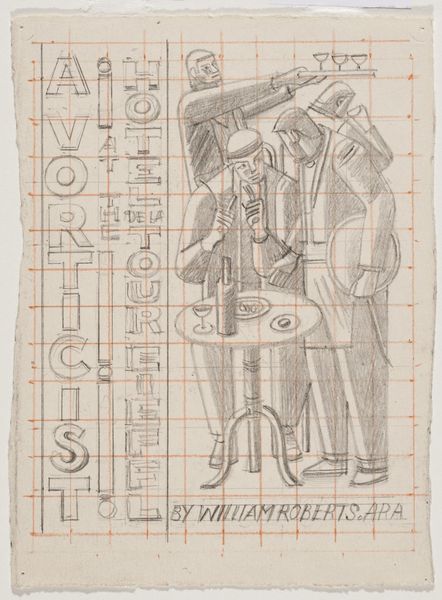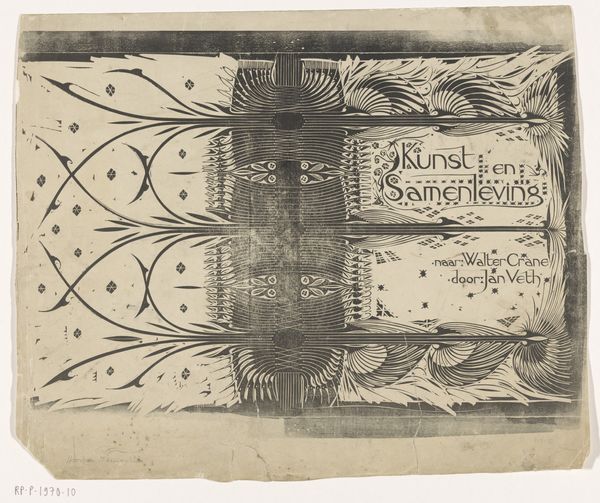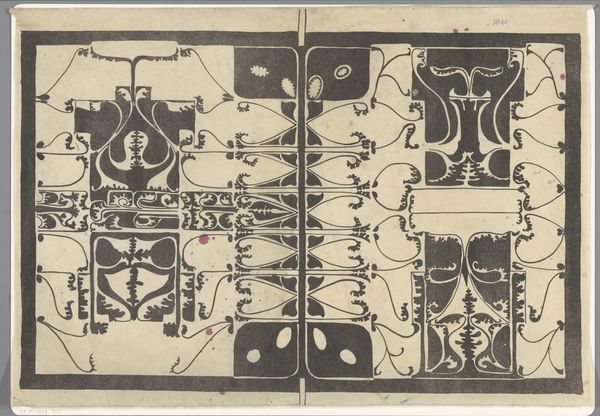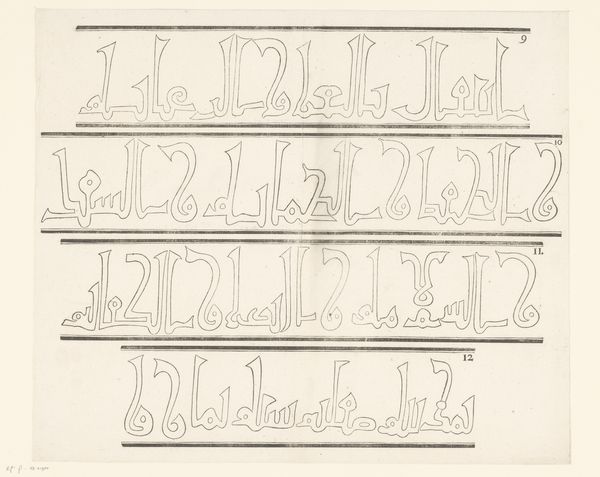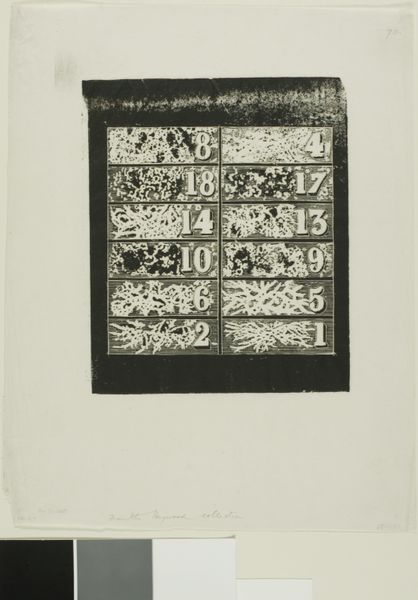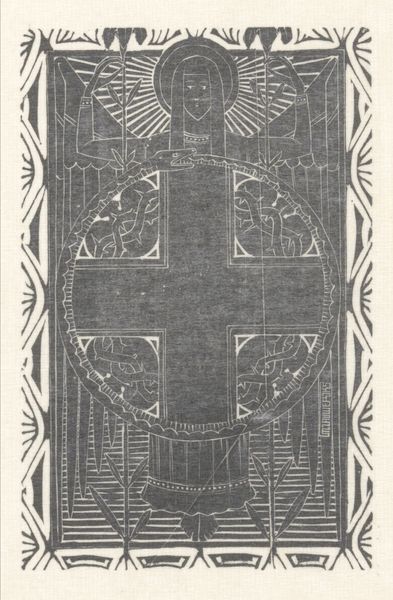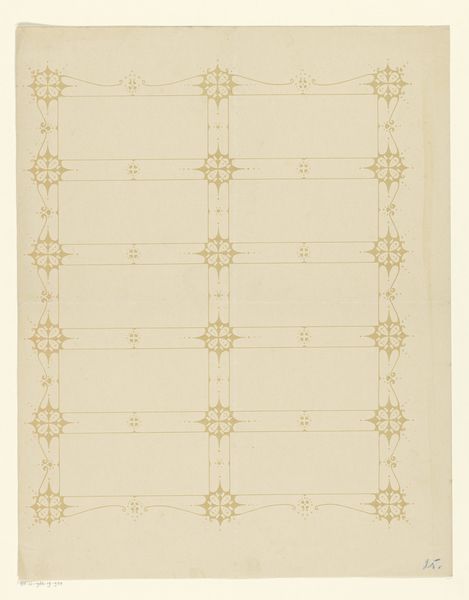
graphic-art, print, linocut, typography, poster
#
graphic-art
#
art-nouveau
#
ink paper printed
# print
#
linocut
#
old engraving style
#
typography
#
linocut print
#
geometric
#
decorative-art
#
poster
Dimensions: height 398 mm, width 281 mm
Copyright: Rijks Museum: Open Domain
Editor: Here we have Carel Adolph Lion Cachet’s "Kalenderblad februari 1899," a linocut print poster from 1899. The geometric shapes and typography give it a striking, almost industrial feel. I'm curious, what stands out to you about this particular piece? Curator: What interests me most is the interplay between what we traditionally consider 'art' and the utterly practical purpose of a calendar. This linocut, intended for mass reproduction, disrupts the boundary. The choice of linocut, often seen as a craft material, elevates the everyday into art. Consider the labor involved in its production: each cut, each print reflects a process and decision of design. Editor: That's fascinating! I hadn't considered the linocut medium as deliberately chosen to blur the lines like that. So, how does that affect our interpretation of the 'Art Nouveau' style it's labeled with? Curator: Exactly. While the decorative flourishes certainly nod to Art Nouveau, Lion Cachet uses those stylistic elements within the constraints of the linocut and print production. How was it disseminated, consumed? Was this a commercial object, or an artistic statement masquerading as such? Thinking about materiality encourages these questions. The ink, the paper - it was all consumed, used. That is a key part of the piece's existence. Editor: So, it's not just about the aesthetic qualities, but also the conditions and means of its making and distribution? Curator: Precisely! It pushes us to consider the socio-economic factors influencing even the seemingly straightforward calendar. What were the printer's conditions, their wage? Whose wall was this hanging on? Did this artwork act like decoration, or a useful product? How does an object’s intention affect its meaning? Editor: I see. It shifts the focus from pure aesthetics to a broader understanding of art's role within society, and the lives of those making it. Thank you! Curator: Indeed. It makes us acknowledge that what we consume—even art—has a very real material presence and socio-political reality that we have a responsibility to analyze.
Comments
No comments
Be the first to comment and join the conversation on the ultimate creative platform.



